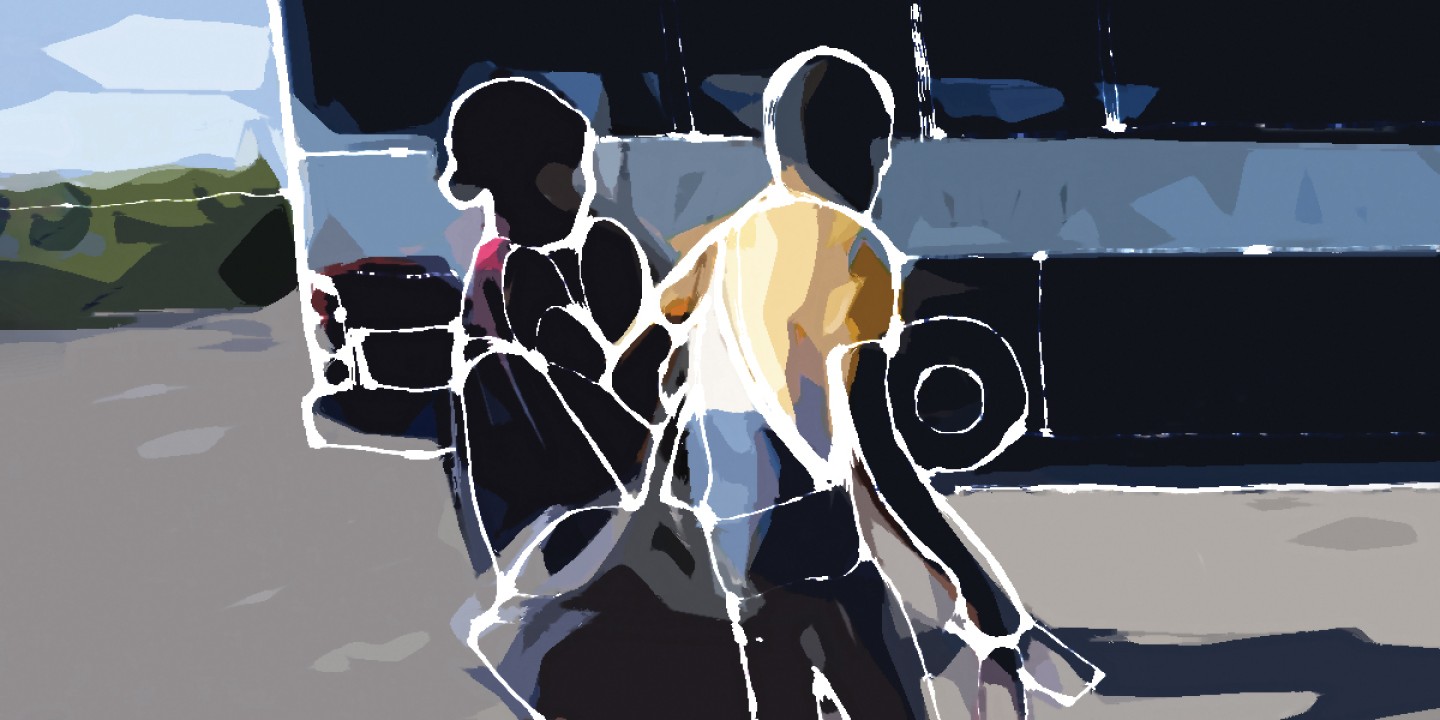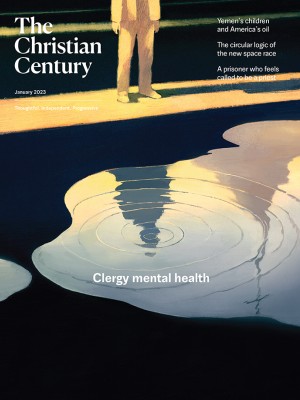A busload of migrants were told something was waiting for them in Chicago
It was our job to be that something.

The first bus full of migrants arrived in Chicago on a temperate night at the end of August. City and nonprofit employees in the area had been hearing rumors of an impending arrival for a while, but then suddenly there they were, climbing out of a pair of charter buses at Union Station. They looked tired and rumpled after a 20-hour ride—and suddenly not like the abstract idea of migrants we had been hearing about and instead like families with little kids and young couples and single men who were specific and individual and here.
Many of the people on the bus were from Venezuela and had made the long overland journey to Texas, where after a few days or hours at a border shelter they had been put on the buses to Chicago. Many of them didn’t know anyone else in the United States, had come here because there was a free bus headed in this direction and because it was as good a place as any other. They had all been told that there was something here in Chicago, waiting for them.
Read our latest issue or browse back issues.
It was our job to be that something. The organization I work for, a nonprofit immigrant legal service provider, was one of dozens tapped by the city to help welcome people to Chicago. The morning after the buses arrived, my coworker and I arrived at the welcome center at 6:45 a.m., armed with stacks of printout listing organizations like ours around the country, orientation packets, and very little knowledge of what we were walking into. Soon the first group of people walked into the welcome center, looking somewhat better rested than they had on TV the night before, and one by one they were brought to our table.
The next ten hours passed in a blur of meeting people—getting their names, the barest sketches of what had made them leave home, how they were doing—and then responding repeatedly to the same questions, doubts, worries. We explained over and over again exactly what this or that paper ICE had given them at the border meant (though most of them had been signed stating that someone had already explained it to them in a language they could understand), telling people that no, they wouldn’t be eligible for work permits for quite some time, that they needed to call this number weekly until they were given a court date, that they were responsible for filling out a change of address form with three different government organizations. Every answer gave rise to three more questions, many of which we couldn’t answer.
The problem we were facing is the same problem that exists just about everywhere in the immigration system. It arises from treating migrants as logistical issues, as suspicious packages abandoned at the airport, as invading armies—as anything but what they are, which is people trying their hardest to survive.
By now, you know the stories of these migrant buses—that they’ve been sent to sanctuary cities like Chicago by the Republican governors of border states as a political stunt. Governor Greg Abbott of Texas, responsible for those initial buses to Chicago and many others that followed, issued a press release the night the first buses arrived, congratulating himself on his cleverness. It ended with all the reasons Chicago was fit to welcome those he dropped off at Union Station: “With its ‘Welcoming City Ordinance’ making it a sanctuary city, Chicago will not deny city services to individuals based on their immigration status. The city also does not require local police to cooperate with federal immigration authorities.”
Abbott meant his statement pejoratively, but it highlighted all the reasons that I found myself in a room full of other advocates and volunteers, ready to help. Each of the policies mentioned, and many more besides, had been hard-won by my colleagues and community members. Even as my coworker and I lost our voices, as we scrambled to find workarounds and solutions to the stumbling blocks put up by ICE and the Texas governor’s lack of communication and transparency, we still had only to look around the room to see all those people there, all the resources and time and effort put to ensuring people didn’t fall through the cracks—to see a city, a place we might be proud to belong to.
After that first bus arrived, Chicago, like New York and Washington, DC, received at least a bus a day for the next two months. Thousands and thousands of people, arriving to a new place without family or connections or a place to stay. Things have gotten more complicated since then. Suburban mayors have objected to having people placed in hotels in their towns. There have been questions about long-term plans and resources, as there always are. The federal government, meanwhile, drastically restricted the number of Venezuelans (and many others) who can enter the United States under Title 42, a so-called public health rule instituted during the Trump administration and kept in place even as Biden declared the pandemic over.
Prior to the buses, Chicago quietly received dozens of immigrants a day—with no welcome center full of volunteers and no small mountain of donations, just the anonymous welcome of a city with opportunity. With the fall election looming, it became politically advantageous to spend time and money rising to the challenge—but this is a challenge our communities should rise to every day. Those first few weeks of hard, direct work made visible to me the relationships, the love that already existed in my home, and how beautiful it is when that community expands to welcome new people in.






